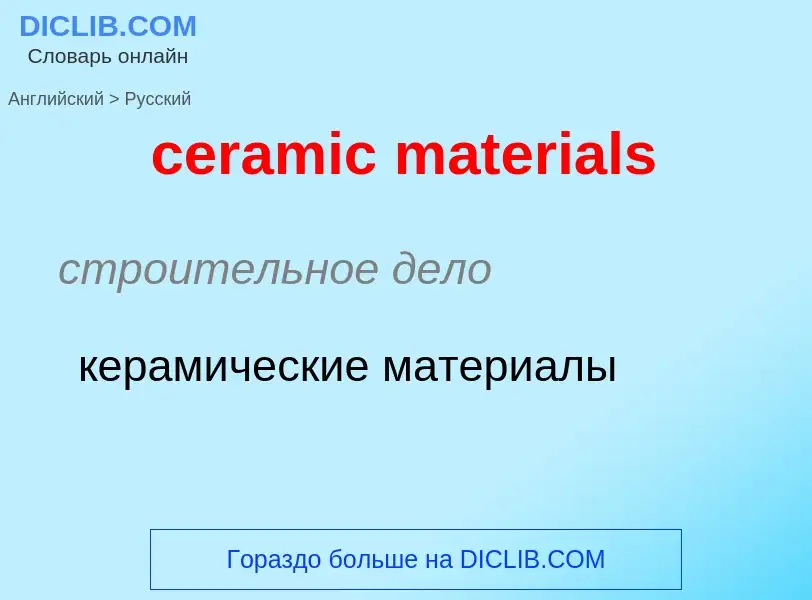Перевод и анализ слов искусственным интеллектом ChatGPT
На этой странице Вы можете получить подробный анализ слова или словосочетания, произведенный с помощью лучшей на сегодняшний день технологии искусственного интеллекта:
- как употребляется слово
- частота употребления
- используется оно чаще в устной или письменной речи
- варианты перевода слова
- примеры употребления (несколько фраз с переводом)
- этимология
ceramic materials - перевод на русский
строительное дело
керамические материалы
общая лексика
керамический материал
[si'ræmik]
прилагательное
общая лексика
керамический
гончарный
[si'ræmiks]
общая лексика
керамика
строительное дело
керамические изделия
строительная керамика
существительное
общая лексика
керамика
гончарное производство
употр. с гл. во мн. ч. керамические изделия
[si'ræmist'serəmist]
существительное
общая лексика
керамик
специалист по керамике
гончар
Определение
Википедия

A ceramic is any of the various hard, brittle, heat-resistant and corrosion-resistant materials made by shaping and then firing an inorganic, nonmetallic material, such as clay, at a high temperature. Common examples are earthenware, porcelain, and brick.
The earliest ceramics made by humans were pottery objects (pots, vessels, or vases) or figurines made from clay, either by itself or mixed with other materials like silica, hardened and sintered in fire. Later, ceramics were glazed and fired to create smooth, colored surfaces, decreasing porosity through the use of glassy, amorphous ceramic coatings on top of the crystalline ceramic substrates. Ceramics now include domestic, industrial, and building products, as well as a wide range of materials developed for use in advanced ceramic engineering, such as in semiconductors.
The word ceramic comes from the Ancient Greek word κεραμικός (keramikós), meaning "of or for pottery" (from κέραμος (kéramos) 'potter's clay, tile, pottery'). The earliest known mention of the root ceram- is the Mycenaean Greek ke-ra-me-we, workers of ceramic written in Linear B syllabic script. The word ceramic can be used as an adjective to describe a material, product or process, or it may be used as a noun, either singular, or more commonly, as the plural noun ceramics.



![The [[Meissner effect]] demonstrated by levitating a magnet above a cuprate superconductor, which is cooled by [[liquid nitrogen]] The [[Meissner effect]] demonstrated by levitating a magnet above a cuprate superconductor, which is cooled by [[liquid nitrogen]]](https://commons.wikimedia.org/wiki/Special:FilePath/Magnet 4.jpg?width=200)
![diving watch bezel insert]] diving watch bezel insert]]](https://commons.wikimedia.org/wiki/Special:FilePath/Qimei watch on Zulu strap.jpg?width=200)

![Cutting disks made of [[silicon carbide]] Cutting disks made of [[silicon carbide]]](https://commons.wikimedia.org/wiki/Special:FilePath/Ultra-thin separated (Carborundum) disk.jpg?width=200)
![Earliest known ceramics are the [[Gravettian]] figurines that date to 29,000 to 25,000 BC. Earliest known ceramics are the [[Gravettian]] figurines that date to 29,000 to 25,000 BC.](https://commons.wikimedia.org/wiki/Special:FilePath/Vestonicka venuse edit.jpg?width=200)
